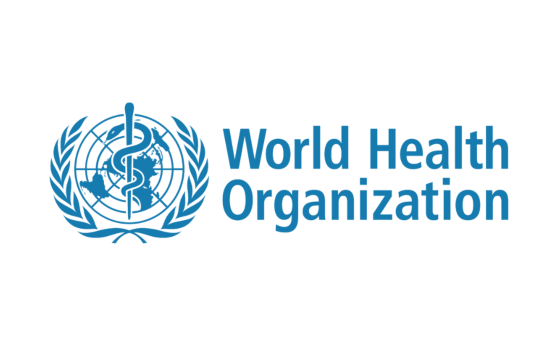 WHO today listed the Sinopharm COVID-19 vaccine for emergency use, giving the green light for this vaccine to be rolled out globally. The Sinopharm vaccine is produced by Beijing Bio-Institute of Biological Products Co Ltd, subsidiary of China National Biotec Group (CNBG).
WHO today listed the Sinopharm COVID-19 vaccine for emergency use, giving the green light for this vaccine to be rolled out globally. The Sinopharm vaccine is produced by Beijing Bio-Institute of Biological Products Co Ltd, subsidiary of China National Biotec Group (CNBG).
"The addition of this vaccine has the potential to rapidly accelerate COVID-19 vaccine access for countries seeking to protect health workers and populations at risk," said Dr Mariângela Simão, WHO Assistant-Director General for Access to Health Products. "We urge the manufacturer to participate in the COVAX Facility and contribute to the goal of more equitable vaccine distribution."
WHO's Emergency Use Listing (EUL) is a prerequisite for COVAX Facility vaccine supply. It also allows countries to expedite their own regulatory approval to import and administer COVID-19 vaccines.
The EUL assesses the quality, safety and efficacy of COVID-19 vaccines, as well as risk management plans and programmatic suitability, such as cold chain requirements. The assessment is performed by the product evaluation group, composed by regulatory experts from around the world and a Technical Advisory Group (TAG), in charge of performing the risk-benefit assessment for an independent recommendation on whether a vaccine can be listed for emergency use and, if so, under which conditions.
In the case of the Sinopharm vaccine, the WHO assessment included on-site inspections of the production facility.
The Sinopharm product is an inactivated vaccine called SARS-CoV-2 Vaccine (Vero Cell). Its easy storage requirements make it highly suitable for low-resource settings. It is the also first vaccine that will carry a vaccine vial monitor, a small sticker on the vaccine vials that change color as the vaccine is exposed to heat, letting health workers know whether the vaccine can be safely used.
WHO's Strategic Advisory Group of Experts on Immunization (SAGE) has also completed its review of the vaccine. On the basis of all available evidence, WHO recommends the vaccine for adults 18 years and older, in a two-dose schedule with a spacing of three to four weeks. Vaccine efficacy for symptomatic and hospitalized disease was estimated to be 79%, all age groups combined.
Few older adults (over 60 years) were enrolled in clinical trials, so efficacy could not be estimated in this age group. Nevertheless, WHO is not recommending an upper age limit for the vaccine because preliminary data and supportive immunogenicity data suggest the vaccine is likely to have a protective effect in older persons. There is no theoretical reason to believe that the vaccine has a different safety profile in older and younger populations. WHO therefore recommends that countries using the vaccine in older age groups conduct safety and effectiveness monitoring to make the recommendation more robust.
WHO emergency use listing
The emergency use listing (EUL) procedure assesses the suitability of novel health products during public health emergencies. The objective is to make medicines, vaccines and diagnostics available as rapidly as possible to address the emergency, while adhering to stringent criteria of safety, efficacy and quality. The assessment weighs the threat posed by the emergency as well as the benefit that would accrue from the use of the product against any potential risks.The EUL pathway involves a rigorous assessment of late phase II and phase III clinical trial data as well as substantial additional data on safety, efficacy, quality and a risk management plan. These data are reviewed by independent experts and WHO teams who consider the current body of evidence on the vaccine under consideration, the plans for monitoring its use, and plans for further studies.
As part of the EUL process, the company producing the vaccine must commit to continue to generate data to enable full licensure and WHO prequalification of the vaccine. The WHO prequalification process will assess additional clinical data generated from vaccine trials and deployment on a rolling basis to ensure the vaccine meets the necessary standards of quality, safety and efficacy for broader availability.
WHO also listed the Pfizer/BioNTech vaccine for emergency use on 31 December 2020; two AstraZeneca/Oxford COVID-19 vaccines on 15 February 2021, produced by AstraZeneca-SKBio (Republic of Korea) and the Serum Institute of India; and COVID-19 vaccine Ad26.COV2.S developed by Janssen (Johnson & Johnson) on 12 March 2021.
Listings
WHO has also listed the Pfizer/BioNTech, Astrazeneca-SK Bio, Serum Institute of India, Janssen and Moderna vaccines for emergency use.
About SAGE
SAGE is the principal advisory group to WHO for vaccines and immunization. It is charged with advising WHO on overall global policies and strategies, ranging from vaccines and technology, research and development, to delivery of immunization and its linkages with other health interventions. SAGE is concerned not just with childhood vaccines and immunization, but all vaccine-preventable diseases.SAGE has issued recommendations on Pfizer (8 January 2021), Moderna (25 January 2021), AstraZeneca (21 April 2021), and Janssen COVID (17 March 2021) vaccines, as well as issued a framework for access and population prioritization roadmap.
SAGE and EUL are complementary but independent processes. The EUL process is centered on determining if a manufactured product is quality-assured, safe and effective. SAGE is policy oriented. Policy recommendations for a vaccine are only of value to a vaccination campaign when the product has been listed or authorized for use.
In the context of COVID-19 and due the pressing need for vaccines, the Secretariat of SAGE and the EUL team have been working in parallel to allow WHO EUL and policy recommendations, based on the available evidence, to be issued in a synchronized manner.